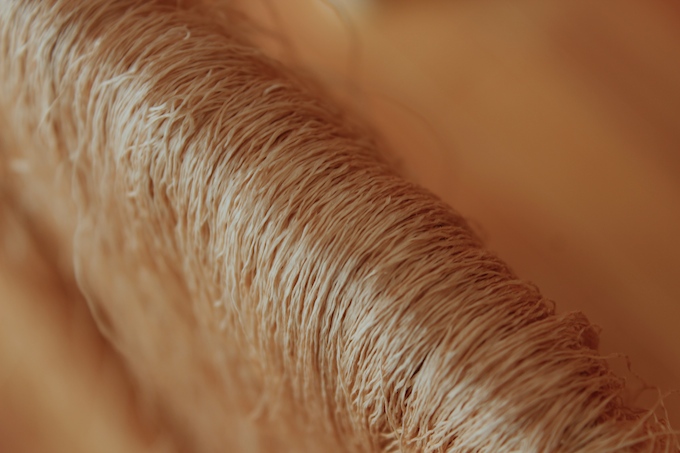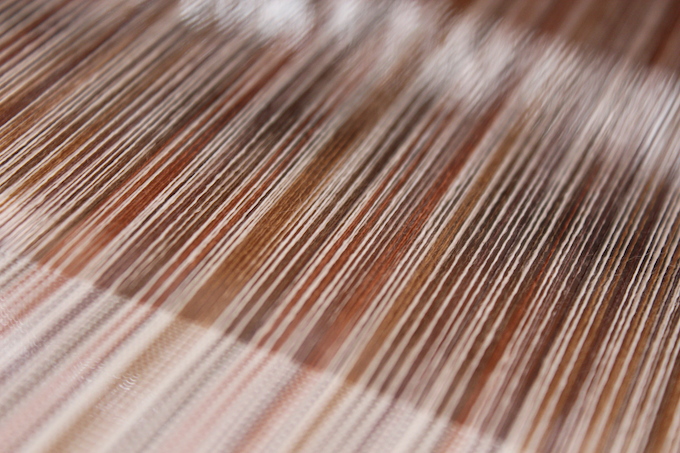
I thought that pellucidity was important above all.
The clear colour without dullness is beautiful no matter what the colour is.
In order to make sure that you have properly extracted the bright colours that plants have, you need to check and see whether they are pellucid or not.
Yes, one of the reasons I moved to the foot of mountain was that I was particular about water for those colours.
Until my child was born, dyeing with cherry was an annual work during the cold season and although they were slightly different in colours, I was feeling quite confident that I had managed to dye the colour of cherry blossoms petals that were heading for full bloom.
But dyeing with cherry that I managed to resume after a long time this year was a little different.
The colour was more complex than before and it was as if oozed out of accumulated various experiences.
I wondered what could be different and I had one thing in mind.
Usually, I decoct cherry branch, turn off the fire, leave it overnight to extract the colour and then start dyeing. But this year, after the cherry branch is left overnight, my husband caught flu with high fever and I had to take care of him.
While I found it hard to wrench myself away, I had no choice but to leave it as it was for a few days.
After I confirmed my husband’s recovery, I scooped the decocted liquid nervously. It seemed that the concentration of the colour increased but neither was there turbidity, nor change in faint aroma that reminded me of Sakuramochi (rice cake filled with sweet bean paste and wrapped in a pickled cherry leaf) and thought “Good! I can dye with it!”
If it wasn’t in winter of a cold area, it would have become turbid in a few days (in the case of summer, overnight) and emitted an offensive smell.
Unexpected colour always appears by unintentional occurrence.
While I look at the dyed threads, I thought it was good to see the aged colour which was different from pellucidity.
The reason why the colour makes me feel perfectly comfortable may be owing to my age of mid-forty.

When I travelled to Denmark last fall, I met Per and Kaori in Bornholm. They are a married couple and both metal carving artists.
They kindly introduced me Anne who was a textile artist and lived in Copenhagen.
Although it was a sudden request made to meet just a few days later, Anne gladly accepted and we met at a cosy gallery run by Anne and a few other craft artists.
It was a short time, but we showed what we do and what we make.
Linen cloths printed by Anne, who was gentle and unpretentious, seem to give me humour and inspiration in everyday life.
And when she saw small pieces of my cloths, I heard her saying “feminine”.
Feminine- I have never consciously made my work that way, but I weave kimono cloths for women in most cases, and I am aiming kimono that has delicate sheen and softness of silk fabric, and will enhance the beauty of person who wears. Perhaps those things might have led to “feminine”.
Actually, I am not exactly sure what femininity is.
That’s why I don’t want to gloss over with colours and designs that looks like it.
I wanted to talk with Anne more about that, but it was pity that I didn’t have enough time and language skills.
Later, when I told about the story to Yagi-san whose shop, Aoyama Yagi carries my work, he told me “I would like to see femininity hiding on the other side instead of expressing it with sweet colours and delicacy”.
How difficult, but I would like to see it too.
